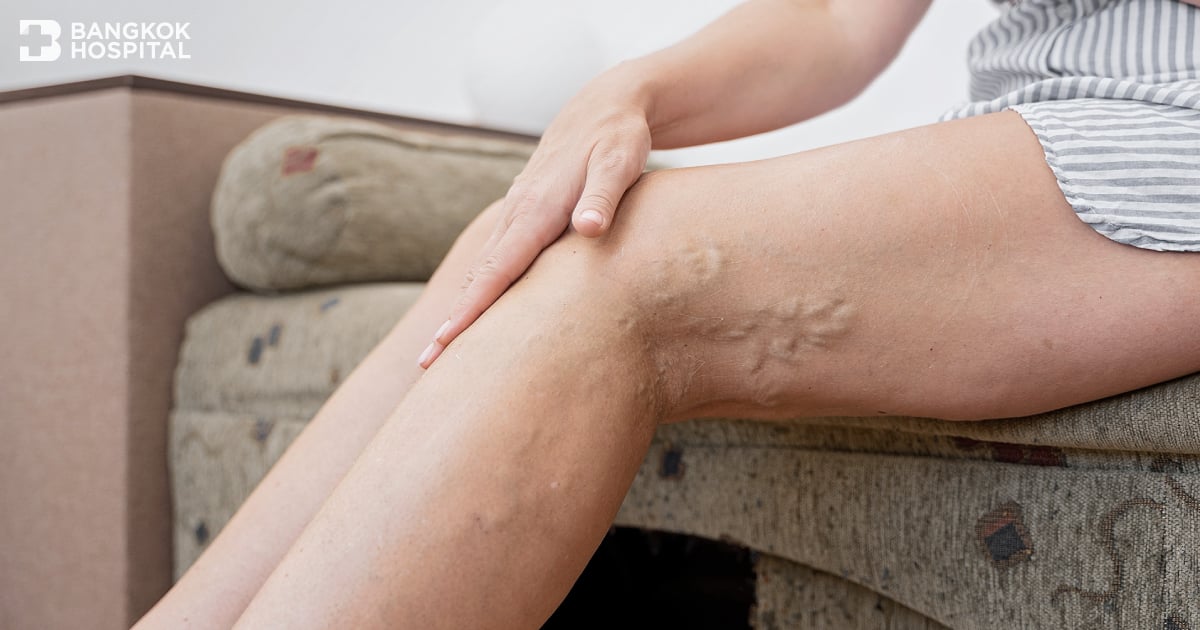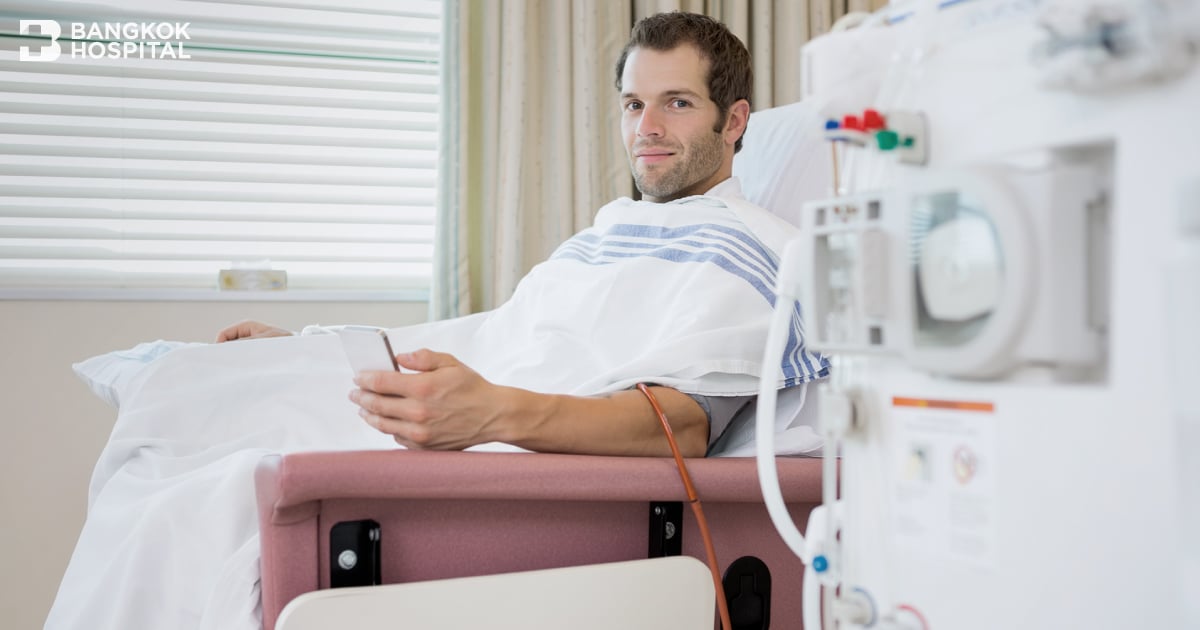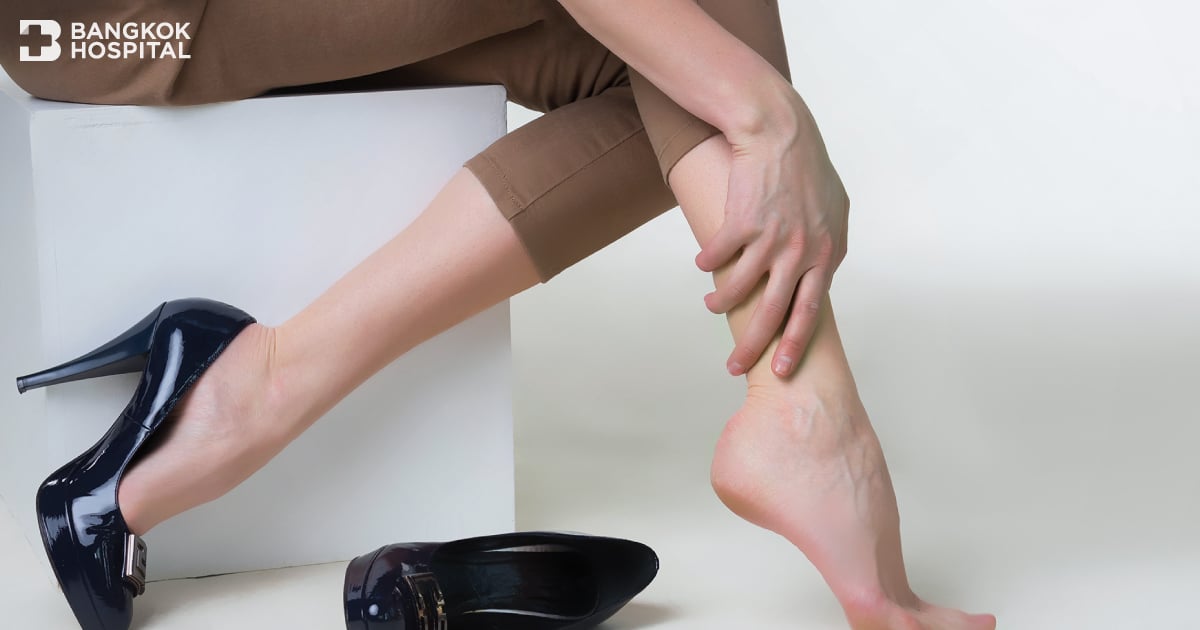
Chronic Venous Insufficiency (CVI), Get it treated right away before it becomes too late.
Chronic venous insufficiency (CVI) refers to a condition when the venous wall and/or valves in the lower extremities do not work properly, making it more difficult for blood to return to the heart from the legs. CVI is caused by damaged or weakened valves and vein wall due to aging and prolonged sitting or standing as well as reduced mobility. As a result, blood can flow backwards and pool or collect in these veins, leading to swelling in the lower legs and ankles.

Implanted Chemo Port - An implanted device allowing easy access to the veins for chemotherapy
Vascular access problems can usually develop in patients who need frequent administration of intravenous fluids or drugs and blood transfusion.

8 exercises to help prevent deep vein thrombosis (DVT)
Work from home has become a reality for a large number of people across the world due to the tremendous effects caused by the COVID-19 pandemic. Although avoiding the commute is a crucial tool in preventing COVID-19 amidst the crisis, the sedentary lifestyles during working from home or even a long travel journey pose significant risks on health and wellbeing, especially when it comes to venous problems.

Restoring quality of life with vascular access for hemodialysis
The kidneys filter wastes and excess fluids from the blood, which are further excreted in the urine. Chronic kidney disease is characterized by the gradual loss of kidney function. When it eventually reaches an advanced stage, dangerous accumulations of excessive fluid, electrolytes and wastes can build up in the body.

Early Detection of Peripheral Arterial Disease Reduces Risk of Limb Amputation
Peripheral Arterial Disease (PAD) is a common circulatory problem in which narrowed arteries reduce blood flow to the limbs e.g. the legs and arms. The severity of PAD varies, depending on the occlusive degrees, from mild discomfort to debilitating leg pain. If left untreated, this vascular disease might become chronic problem and act as a silent killer that can result in life-threatening conditions. If warning signs and symptoms of PAD exhibit, they must not be overlooked. Immediate medical attention for early detection of PAD should be sought in order to get accurate diagnosis and appropriate treatment before it progresses as well as reduce disease severity and chances of critical limb ischemia and limb amputation.

Early Detection of Peripheral Arterial Disease (PAD)
Blood vessel occlusion or blockage can potentially lead to serious health problems, such as cardiovascular disease, neurovascular disease, hypertension and peripheral arterial disease (PAD). These vascular problems often result in life-threatening conditions, especially if early detection cannot be applied in time. Pulse volume recoding (PVR), an advanced non-invasive peripheral vascular diagnostic system helps to detect blood vessel blockage or plaque buildup that puts a person at risk of developing peripheral arterial diseases, allowing effective and timely treatments before conditions progress.

Vascular Ulcers Have The Potential To Be Dangerous
Vascular ulcers are chronic, or long term, breaches in the skin caused by problems with the vascular system, the circulatory system. These ulcers have the potential to be dangerous.

Early Treatment Helps to Terminate Varicose Veins
For many people, varicose veins characterized by spider veins are simply a cosmetic concern. Nonetheless, for some people, varicose veins can cause aching pain and discomfort and might lead to more serious problems of veins.

Seven interesting facts about varicose veins. Never leave them untreated!
Since varicose veins might be usually perceived as a minor health problem which does not interfere daily life, these enlarged or twisted veins caused by weakened or damaged vein walls and abnormal vein valves especially in the legs are often left untreated.

Economy class syndrome
“Economy class syndrome” is a headline that was used to describe a case of an acute pulmonary embolism, which occurred on a commercial passenger flight. However, this name may not really be appropriate as an embolism may occur in passengers in business, first class, or other modes of transport. It occurs as a result of being seated for long periods of time, a more appropriate name would be traveler’s thrombosis.
